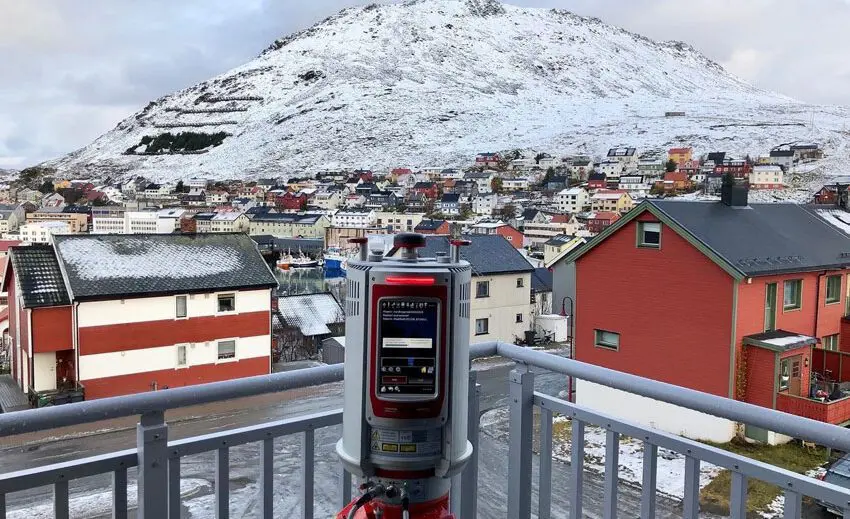Snow sensor project exported to the mainland

UNIS used a terrestrial laser scanner in Honningsvåg to advice the local authorities on where they should place the snow sensors. Photo: Sara Mollie Cohen/UNIS.
Top image: UNIS used a terrestrial laser scanner in Honningsvåg to advice the local authorities on where they should place the snow sensors. Photo: Sara Mollie Cohen/UNIS.
The snow sensor project, a collaboration between UNIS, the Arctic Safety Centre and Telenor Svalbard, has been so successful that Nordkapp municipality in mainland Norway has decided to test the system out in the town of Honningsvåg.
23 October 2020
Text: Eva Therese Jenssen
The DRIVA project, also known as the snow sensor project, extends from Longyearbyen to Honningsvåg, Nordkapp municipality. Martin Indreiten from the Arctic Safety Centre (ASC) at UNIS and UNIS head engineer Sara Mollie Cohen was in Honningsvåg earlier this week to help them start up the snow sensor project.
Indreiten and Cohen went down to Honningsvåg to deliver snow sensors as part of the DRIVA project from UNIS, Telenor and the Arctic Safety Centre. Honningsvåg experienced a winter storm in January 2020 which resulted in the evacuation of over 70 people, and many of the houses are in ‘red zones’ for avalanches.
– We have performed initial assessments including using a terrestrial laser scanner to make detailed terrain models and advised them where to place the sensors in order to have access to almost real-time snow fall accumulation data for the upcoming winter season. This data can greatly help the community preparedness for avalanches for the upcoming winter season, says Cohen.
Indreiten also gave a presentation to the executive committee of Nordkapp municipality about the experiences from the project in Longyearbyen. In Honningsvåg, the plan is to set up sensors in the avalanche-prone areas, where the authorities can monitor snow settlement minute by minute. When the snow reaches a certain limit, one can evacuate homes that are in the danger zone.

The sensors used in Longyearbyen and soon in Honningsvåg, are made by Einar Jenssen at Telenor Svalbard. In an office at UNIS he makes the casings using a 3D printer, installs the sensor and batteries, and a new sensor is available.
The snow sensors have Telenor’s Narrowband Internet of Things Technology (NB-IoT) installed. This provides completely new opportunities for measuring and sending data on temperature and snow depths continuously, so that the authorities get a better basis for assessing the avalanche risk. The sensor measures snow depth, temperature and humidity.
It was in the winter 2019 that UNIS in collaboration with Telenor Svalbard installed a new, smart snow sensor on Sukkertoppen, the mountain above Longyearbyen.
Barely two years after the first sensor was in place at Sukkertoppen, the DRIVA project has been so successful that the concept has now been exported to the mainland.
